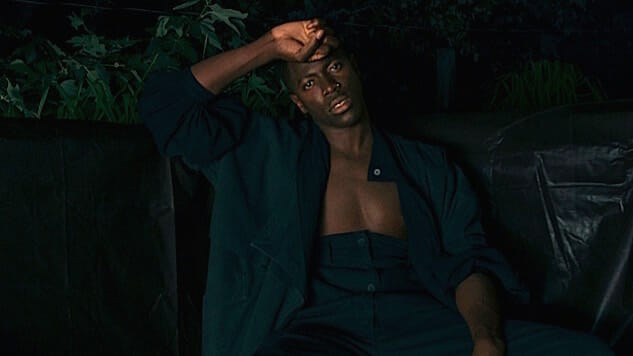Moses Sumney: The Best of What’s Next
After years of guest-starring on other artists' projects, the highly touted songwriter is ready to let his falsetto do the talking.
Photo: Ibra Ake
Before Moses Sumney had ever officially released any music, the towering guitarist and multi-instrumentalist was invited to perform at the Walt Disney Concert Hall in Los Angeles as part of Beck’s 2013 Song Reader concert series. His performance was a standout on a bill that included heavy hitters like Jarvis Cocker, Jenny Lewis and Jack Black, and ever since, Sumney’s dynamic stage presence and soulful bedroom folk EPs have made him a sought-after collaborator for an esteemed cast of musical peers.
The 26-year-old UCLA grad’s talent for vocal improvisation and layered, looped sounds led him into tours and performances with the likes of Sufjan Stevens, James Blake, Karen O and Solange. But as his credentials accrued, Sumney had to negotiate the internal and external pressures that weighed on him before he could release his own full-length album. Now Aromanticism, the highly anticipated conceptual album about romantic love that he’s labored over for the past three years, is finally out.
“I definitely have a very high standard,” Sumney says. “Part of what took me so long to make this record was making sure I felt that it was not only good but unique-sounding. It’s a thing that bore heavy on me—the desire to create art that is longstanding and meaningful aesthetically.”
“Culturally, I was American, but I was still from an African family. I went from being the American in Africa to the African in America. There was never a point of, ‘this is where you belong.’”
The winding road to Aromanticism, which came out Sept. 22 on Jagjaguwar, was a unique one, to say the least. He was born and raised in San Bernardino, Calif., but when he was 10 years old his parents—both Christian pastors—moved the family to their native country of Ghana for missionary work. Sumney’s six years there were fraught with bullying and introversion.
-

-

-

-

-

-

-

-

-

-

-

-

-

-

-

-

-

-

-

-

-

-

-

-

-

-

-

-

-

-

-

-

-

-

-

-

-

-

-

-








































